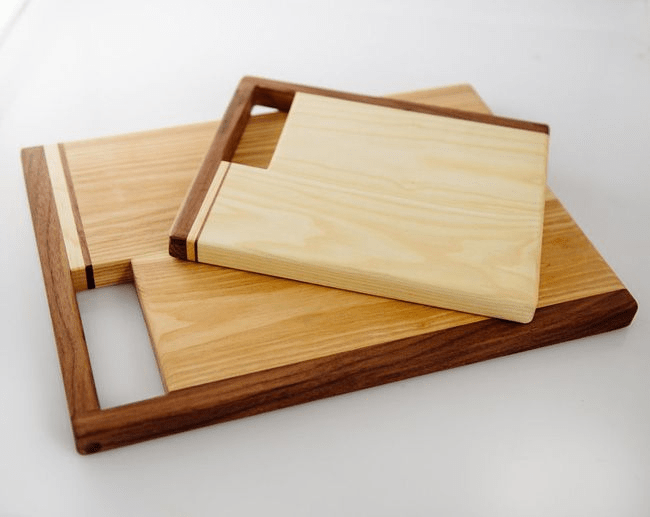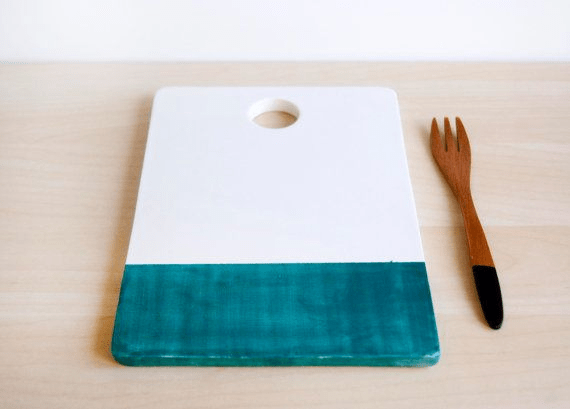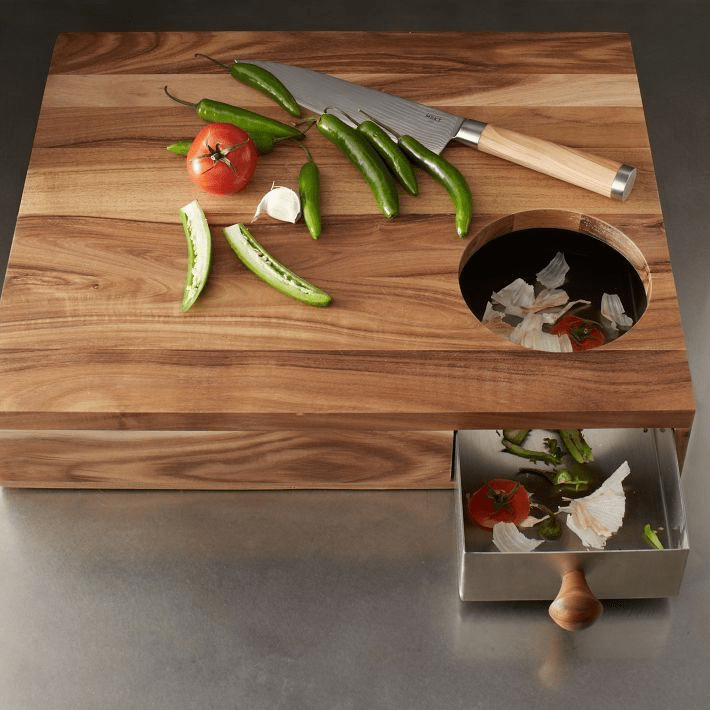A cutting board is an essential kitchen item that can be used to cut up fruits, vegetables, and meat with ease. Choosing the right one can be tricky. Though, so we’ve decided to take some of the guesswork out of it for you! Here are four types of cutting boards to choose from.
Material
Wood or Plastic? Woodcutting boards are traditional and have been around forever. They can offer a rustic look to your kitchen, which is part of their appeal. Moreover, they’re not without drawbacks. Cutting on wood can dull knives faster than using plastic because it isn’t as soft or smooth. It also absorbs more bacteria because it isn’t porous like plastic. If you use a wood cutting board, make sure to thoroughly clean it after each use—and never put it in your dishwasher! Plastic cutting boards are far easier to clean since they are smooth and nonporous. So any bacteria won’t get trapped inside.
Plus, they tend to be lighter weight and don’t dry out as fast as wood cutting boards do. If aesthetics matter, there are plenty of great-looking plastic cutting boards that come in all kinds of colors and styles that will blend right into your kitchen decor. In fact, some people even think that these days modern plastic cutting boards are just as pretty—if not prettier!—than their wooden counterparts. That being said, if you choose a plain-looking one, they might not exactly give your kitchen an inviting feel when friends pop over for dinner parties or holiday celebrations.
Wooden Cutting Board
If you have a bit of extra money to spend, a wooden cutting board is ideal for raw meat, fish, and chicken. The wood absorbs any bacteria from these foods and prevents them from contacting other surfaces in your kitchen. In addition, wooden boards can withstand high heat for longer periods of time than plastic or composite options, which means you can cut directly on them without having to worry about ruining your board. Most wooden boards are also handcrafted from hardwood trees and will last much longer than other kinds of cutting boards.
Plastic Cutting Board
A plastic cutting board is a durable and low maintenance. It is nonporous, so juices from raw meat don’t soak into it, which eliminates any risk of cross-contamination in your kitchen. However, these boards are not always easy to clean; they may retain odors and bacteria if they are not cleaned thoroughly after every use. Their material can also be difficult on knife blades—plastic is prone to dulling knives more quickly than wood or bamboo.
An advantage of using a plastic cutting board is that they are lightweight and do not damage countertops. Some plastic boards have built-in wells for catching juices while chopping Which helps prevent messes. They come in bright colors with high contrast edges for easy identification when preparing food. Bamboo Cutting Board: A bamboo cutting board offers an eco-friendly alternative to most other types of wood because its natural fibers are stronger than most types of wood without being harder on knives.
Ceramic Cutting Board
A lot of experts say that a good quality ceramic cutting board is just as effective as plastic or wood boards when it comes to keeping your food safe from bacteria. In fact, some studies have found that chopping veggies on a ceramic board can reduce contaminants by up to 60 percent, which helps explain why so many experts recommend them. The downside: they’re more expensive than both plastic and wood cutting boards.
Size
Large or small, wood or plastic? Choosing which cutting board to buy can be confusing. Large boards are easier to work with for slicing and dicing larger items, while small boards are convenient for quick tasks like chopping garlic. Woodcutting boards are durable and attractive. Along with this, they may harbor bacteria between uses. Plastic boards tend to be lighter and won’t mar knives as easily as wood, but they might contain harmful chemicals that leach into your food. Keep in mind that you’ll probably need more than one cutting board; it’s not a bad idea to have one board strictly dedicated to raw meat. The best type of cutting board will depend on how much you intend to use it and what foods you plan on cutting. But don’t worry: If there was ever such a thing as a one-size-fits-all cutting board, we haven’t found it yet.
Features
The most important feature of a cutting board is material. There are four main choices: Plastic, Wooden, Slate, and Ceramic. Each has its advantages and disadvantages. An economical plastic board is light-weight for easy carrying to any location in your kitchen. But they can warp when exposed to certain liquids or high temperatures (like hot pans) and can dull knives more quickly than other types of boards because they don’t have natural knife-friendly surfaces like wood or slate do. Wood has good weight, which makes it less likely to slide around on countertops during use; however, wood boards need regular oiling with mineral oil (available at hardware stores) to prevent warping or water stains from the faucet of your sink.
Review of Wooden Cutting Board
A wooden cutting board can be a great addition to your kitchen. Wood is an easy material to care for. Because wood is porous it won’t harbor bacteria as plastic cutting boards can. While you can get hardwood cutting boards, don’t get one made of pine—it might look nice, but pine is soft and will mark easily. Avoid any wood that looks rough or has gouges or splits in it, too—it may harbor bacteria due to wounds on its surface.
Review of Plastic Cutting Board
Although wooden cutting boards are more expensive than plastic or bamboo. Additionally, they’re also a great choice for those who want to avoid harmful chemicals. Wood is an organic product, and you’ll notice that most manufacturers of wood cutting boards will tell you that their products are meant to be cleaned. Moreover, with soap and water rather than put through a dishwasher cycle. If properly cared for, a good quality wooden cutting board will last several decades.
Review of Ceramic Cutting Board
Ceramic is a great choice for those with sensitive skin. It’s ultra-durable and can be easily sanitized. The only downside is that they’re a bit on the heavier side. So if you have a weak grip or arthritis, it might be hard to use. Another drawback is that it does absorb heat, which means your knife can quickly become dull when cutting through something like meat or vegetables. Ceramic doesn’t offer much in terms of functionality; however, most cutting boards double as trivets when not in use for keeping your hot dishes warm until serving time. Whatever material you choose, make sure it has rubber feet on all four corners (so they don’t slip) and edges (to avoid scratching surfaces).






